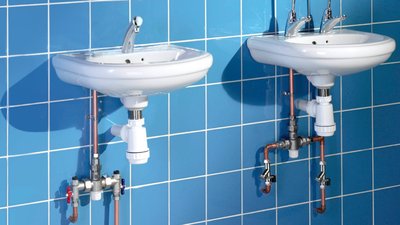Demystifying Pressure Reducing Valves: A Homeowner’s Guide

Pressure reducing valves, also known as pressure regulators, are mechanical devices installed in plumbing systems to control and maintain consistent water pressure.
Ensuring Plumbing System Efficiency: The Role of Pressure Reducing Valves

PRVs serve as guardians of plumbing infrastructure, regulating water pressure from the main supply line to prevent excessive pressure that could lead to leaks, bursts, or damage to fixtures and appliances. By reducing incoming water pressure, PRVs ensure a steady flow of water throughout the household plumbing system, enhancing efficiency and longevity.
Can You Fix Water Pressure? A Detailed Guide for Homeowners and Professionals

Addressing water pressure issues can seem daunting, but with the right knowledge and tools, it is manageable. Understanding the causes and implementing the appropriate solutions will help restore normal water flow in your home
The Comprehensive Guide to Adjusting a Tempering Valve

A tempering valve, also known as a thermostatic mixing valve, blends hot and cold water to maintain a pre-set safe temperature output. This functionality is critical in preventing hot water injuries and ensuring comfort and safety in environments with vulnerable individuals, such as children and the elderly.
Exploring the Critical Role of Tempering Valves in Modern Plumbing Systems

Tempering valves blend hot and cold water to deliver it at a consistent, pre-set temperature. This critical function not only prevents scalding injuries but also maintains uniform water temperatures, crucial for both residential and commercial environments.
Understanding Thermostatic Mixing Valves (TMVs): Essential Safety Devices in Plumbing

TMVs operate through a temperature-sensitive element that adjusts the balance of hot and cold water in response to changes in water supply conditions.
Comprehensive Guide to Adjusting a Water Pressure Reducing Valve

Water pressure reducing valves are designed to control excessive incoming water pressure from municipal water supplies. Located typically near the main water entrance, these valves are critical for preventing issues such as pipe bursts and leakages in your plumbing system.
What is the normal water pressure in a house?

Water pressure is the force exerted by the flow of water in your plumbing system. It is measured in pounds per square inch (psi). The level of water pressure determines how forcefully water flows out of your taps and fixtures.
How to reduce water pressure?

Ideal water pressure is essential for the functionality of your home’s plumbing system. High water pressure, which is generally considered pressure above 60 pounds per square inch (psi), can strain your plumbing fixtures and connections.
How do I know if my pressure reducing valve is bad?

Knowing the signs of a failing pressure reducing valve can save you from unexpected high repair bills, water damage, and inefficient water usage

